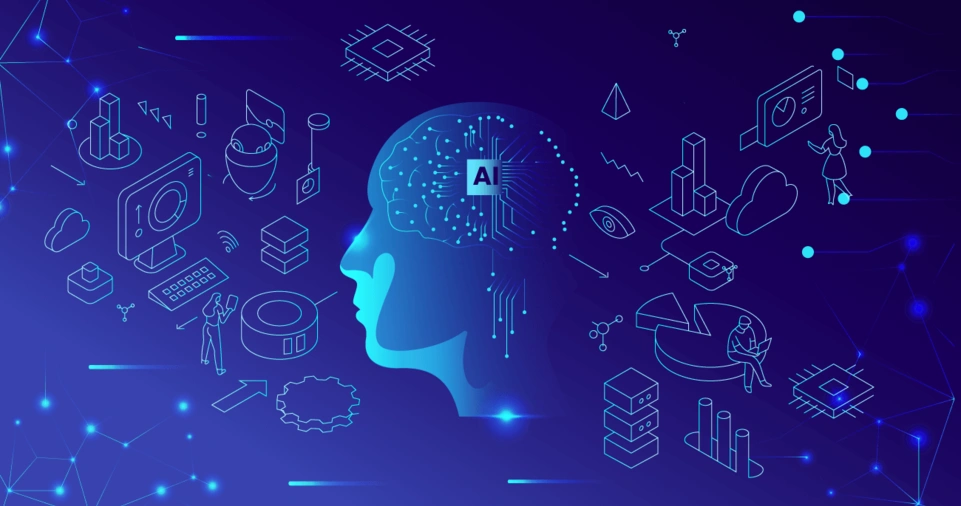Machine learning (ML) is an exciting and rapidly growing field that has transformed industries, from healthcare to finance and beyond.
Whether you’re a student, professional, or hobbyist, getting started with machine learning algorithms can open up new opportunities in the world of data science and AI.
Machine learning helps machines learn from data, identify patterns, and make decisions with minimal human intervention.
This introduction aims to guide you on how to begin your journey into the world of machine learning algorithms, explaining essential concepts, tools, and techniques.
The beauty of machine learning lies in its applications across various domains, including artificial intelligence (AI), automation, and predictive modeling.
However, with the vast amount of material available, it can be overwhelming for beginners.
This guide provides a structured approach, focusing on key areas that will help you take your first steps with machine learning algorithms.
By understanding the basics, exploring algorithms, and gaining hands-on experience, you will be well-equipped to venture deeper into this fascinating field.
Let’s break down the process into manageable steps so you can build a solid foundation in machine learning.
Understanding the Basics of Machine Learning
Before diving into algorithms, it’s crucial to grasp the foundational concepts of machine learning.
This will help you understand how algorithms work, what type of problems they solve, and how to apply them effectively.
What is Machine Learning?
Machine learning is a subset of artificial intelligence (AI) that enables computers to learn from data without being explicitly programmed.
Instead of writing code for every decision or action, ML algorithms analyze data, detect patterns, and make predictions based on what they’ve learned.
The primary goal is to build models that can generalize from the data, so they can handle new, unseen examples.
Types of Machine Learning
Machine learning can be classified into several categories based on how the algorithms learn from the data.
The main types are:
Supervised Learning
In supervised learning, the algorithm is trained using labeled data. The dataset contains both input data (features) and the correct output (label).
The algorithm learns by comparing its predictions to the actual output and adjusting itself accordingly. Supervised learning is widely used for classification and regression tasks.
Examples include:
- Classification: Predicting whether an email is spam or not based on features like content, sender, and subject.
- Regression: Predicting the price of a house based on features like size, location, and number of rooms.
Unsupervised Learning
Unsupervised learning involves training the algorithm on data without labeled outputs. The goal is to identify patterns or relationships in the data, such as clusters or associations.
Common techniques include:
- Clustering: Grouping similar data points together (e.g., customer segmentation).
- Dimensionality Reduction: Reducing the number of features in the dataset while retaining essential information (e.g., Principal Component Analysis – PCA).
Reinforcement Learning
Reinforcement learning is inspired by how humans and animals learn through trial and error.
In this type of learning, an agent interacts with an environment, takes actions, and receives feedback in the form of rewards or penalties.
The agent’s objective is to maximize the cumulative reward over time. Reinforcement learning is used in robotics, self-driving cars, and game-playing algorithms.
Key Concepts in Machine Learning
To effectively work with machine learning algorithms, it’s important to understand a few core concepts:
Features and Labels
- Features: These are the input variables or attributes used by the model to make predictions.
- Labels: These are the target output values that the model is trying to predict.
Training and Testing Data
Machine learning models are trained on a portion of the data (training data) and then evaluated on another portion (testing data).
This helps assess the model’s ability to generalize to new, unseen data.
Overfitting and Underfitting
- Overfitting occurs when a model is too complex and learns the noise in the training data rather than general patterns. This results in poor performance on new data.
- Underfitting happens when a model is too simple and cannot capture the underlying patterns in the data, leading to low accuracy on both training and testing data.
Evaluation Metrics
Model performance is evaluated using various metrics, such as:
- Accuracy: The proportion of correct predictions.
- Precision: The ratio of true positive predictions to total positive predictions.
- Recall: The ratio of true positive predictions to the total number of actual positive cases.
- F1 Score: A balance between precision and recall.
Choosing the Right Tools and Programming Language

Python is the most popular language for machine learning due to its simplicity, readability, and a rich ecosystem of libraries.
To get started, you’ll need to familiarize yourself with some essential tools and libraries that make machine learning tasks easier.
Why Python for Machine Learning?
Python offers several advantages for beginners and experts alike:
- Ease of use: Python is known for its clear and readable syntax.
- Rich libraries: Python’s libraries like NumPy, Pandas, and Scikit-learn simplify data manipulation, processing, and modeling tasks.
- Community support: Python has a large and active community that contributes tutorials, forums, and open-source projects.
Popular Python Libraries for Machine Learning
- NumPy: A core library for numerical operations, especially for handling large multi-dimensional arrays and matrices.
- Pandas: Used for data manipulation and analysis, it provides data structures like DataFrames that are essential for working with structured data.
- Matplotlib & Seaborn: Visualization libraries to help you explore and present data insights.
- Scikit-learn: One of the most widely used libraries for implementing classical machine learning algorithms like linear regression, decision trees, and clustering.
- TensorFlow & PyTorch: These are the go-to frameworks for deep learning, supporting neural networks and advanced models.
IDEs and Notebooks
For coding, you can use Jupyter Notebooks, Google Colab, or IDEs like PyCharm or VS Code. These environments support easy coding, debugging, and testing.
Key Algorithms to Get Started With
Once you have the foundational knowledge, the next step is to explore some of the most common machine learning algorithms.
Starting with simple models allows you to understand the underlying principles before moving to more complex ones.
Linear Regression
Linear regression is one of the simplest machine learning algorithms used for predicting continuous values.
It assumes a linear relationship between the input features and the output label. It’s commonly used in applications like price prediction and forecasting.
Logistic Regression
Despite the name, logistic regression is used for binary classification tasks.
It predicts the probability of a binary outcome (e.g., predicting whether an email is spam or not) based on input features.
The output is between 0 and 1, and a threshold determines the class.
K-Nearest Neighbors (KNN)
KNN is a simple and intuitive classification algorithm. It works by finding the k closest training examples to a test instance and making predictions based on the majority class among the k neighbors.
Decision Trees
Decision trees are used for both classification and regression tasks. They work by splitting the data based on certain feature values, creating a tree-like structure of decisions. The leaves of the tree represent the output labels.
Random Forests
Random forests are an ensemble learning technique that combines multiple decision trees to make more accurate predictions.
By averaging the predictions of several trees, random forests reduce the risk of overfitting and increase robustness.
Support Vector Machines (SVM)
Support Vector Machines are powerful classifiers used for high-dimensional data.
They work by finding a hyperplane that best separates the data points into different classes.
SVMs are effective for both classification and regression problems, particularly in complex scenarios.
Practical Steps for Hands-On Learning

Once you have an understanding of algorithms, the next step is applying them to real-world data. The best way to gain practical experience is through projects.
Here’s how to get started:
Explore Datasets
To begin, look for open datasets available online.
Some great sources include:
- Kaggle: A platform with a variety of datasets and machine learning competitions.
- UCI Machine Learning Repository: A collection of datasets for research and practice.
- Google Dataset Search: A tool for finding datasets across the web.
Data Preprocessing
Before applying algorithms to the data, it’s essential to clean and preprocess it:
- Handling missing data: Techniques like imputation or deletion are used.
- Feature scaling: Normalizing or standardizing features to ensure models perform well.
- Encoding categorical variables: Converting categorical data into numeric values (e.g., one-hot encoding).
Train and Evaluate Models
Split the data into training and testing sets (e.g., 80% for training and 20% for testing).
Use cross-validation to evaluate the model’s performance and fine-tune hyperparameters using techniques like Grid Search or Random Search.
Model Deployment
Once you have a trained model, deploy it in real-world applications.
Tools like Flask and Django can help you build web applications around machine learning models.
ALSO READ: How to Use GitHub for Version Control and Collaboration
Conclusion
Getting started with machine learning algorithms can be a challenging but rewarding experience.
By building a strong foundation in machine learning concepts, choosing the right tools, and gaining hands-on experience with algorithms, you can unlock the potential to solve complex problems with data.
Remember, consistency is key.
Keep experimenting, learning from your mistakes, and evolving your skills over time. With the ever-expanding field of machine learning, the possibilities for innovation are limitless.
Happy learning!

